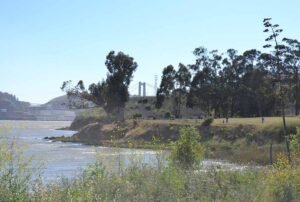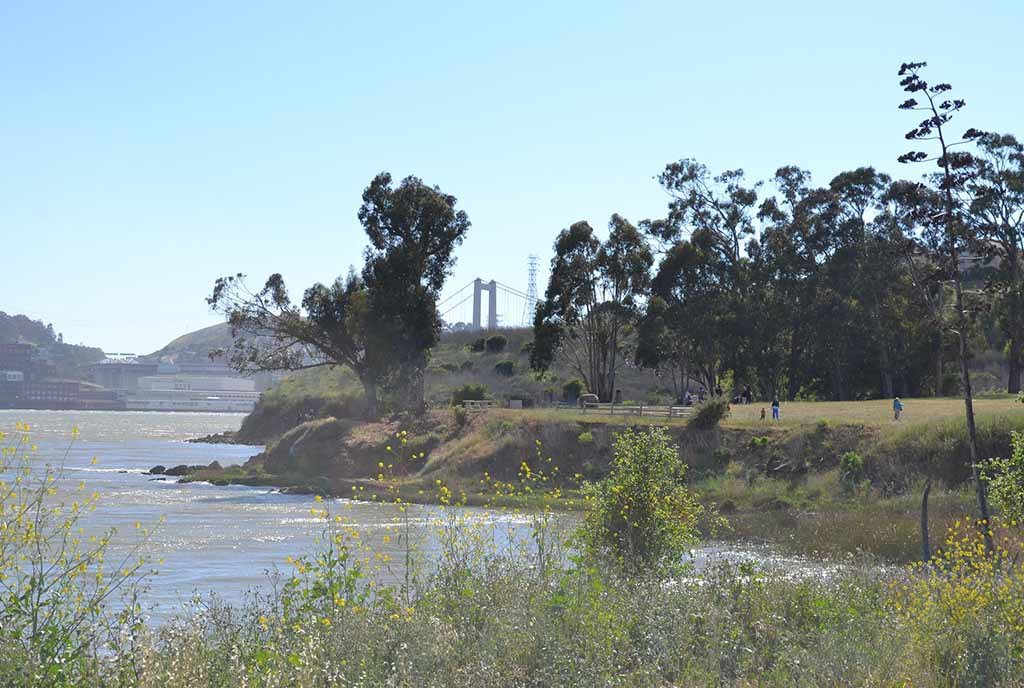
February 10, 2020; Colorlines and BBC
Organ Pipe Cactus National Monument sits along the Arizona-Sonora border, adjacent to the lands of the Tohono O’odham Nation. Many of the American Indian nation’s sacred places and burial sites are now within the boundaries of these public lands, protected for decades by their status as both a UNESCO biosphere reserve and a national monument. No longer. As the Trump administration plows ahead with building its border wall, dynamite is blasting through an area known as Monument Hill, destroying a place where the O’odham people buried Apache warriors with whom they fought.
On February 15, several dozen indigenous families marched to the Ajo Border Patrol Station to protest the desecration of their ancestors. They chanted, “We didn’t cross the border, the border crossed us,” referring to the fact that their tribe has long lived on both sides of the US and Mexican border. The border wall is one more attempt to erase them as a people, says Tribal Chair Ned Norris, Jr.
That erasure extends to the fact that the US government has made absolutely no effort to engage the tribe in nation-to-nation talks. The tribe expressed its concerns regarding the path of the border wall last November, and only received a response in January. That response offered no indication that the administration had heard their concerns, says Norris in a video available on Twitter.
Rep. Raul Grijalva (D-AZ), who represents the area that includes Organ Pipe, has also expressed deep concern over the path of the border wall. He visited the ancient O’odham sites in January and sent a letter to the administration asking about their plans to protect the area’s archeological and sacred sites. Grijalva says he has gotten no response. He has called the actions of the administration “sacrilegious.”
Norris says, “That would be no different from someone coming with a bulldozer into Arlington [National] Cemetery and bulldozing through the graves that are there.”
Sign up for our free newsletters
Subscribe to NPQ's newsletters to have our top stories delivered directly to your inbox.
By signing up, you agree to our privacy policy and terms of use, and to receive messages from NPQ and our partners.
Customs and Border Patrol (CBP) claims to have an “environmental monitor” at the site, but observers are not confident that the purpose is anything more than cover for the continued destruction of the O’odham sacred lands. A July 2019 internal report from the National Park Service, obtained by the Washington Post, estimated that 22 archeological sites would be destroyed within Organ Pipe, if the border wall were constructed. One of those sites, Las Playas, has archeological ruins dating back to 10,000 years ago.
Laiken Jordahl, who is with the Tucson-based Center for Biodiversity, which has filed a lawsuit to stop border wall construction, told the Washington Post, “The entire monument is ancestral lands. The tribe uses it to gather plants, they still actively use it for ceremony, the entire landscape is sacred to the tribe.”
The US Department of Homeland Security claims that under the Real ID Act of 2005, it has Congressional authorization to waive all laws that conflict with US national security policy. All along the border, dozens of environmental laws as well as the Native American Graves Protection and Repatriation Act have been ignored, leading to widespread environmental damage, including the loss of dozens of ancient saguaro and organ pipe cactuses.
Jordahl told the Washington Post, “They’re plowing over ancient saguaro cactuses, 200-year-old cactuses, chopped up like firewood—it’s appalling. They are also sacred to the O’odham; they see them as the embodiment of their ancestors. So to see them turned into mulch—it’s deeply upsetting.”
Rep. Grijalva says he plans to convene hearings in the coming weeks to consider repealing the waiver authority granted to the Homeland Security Secretary under the Real ID Act. Unfortunately, the damage has already been done.—Karen Kahn













